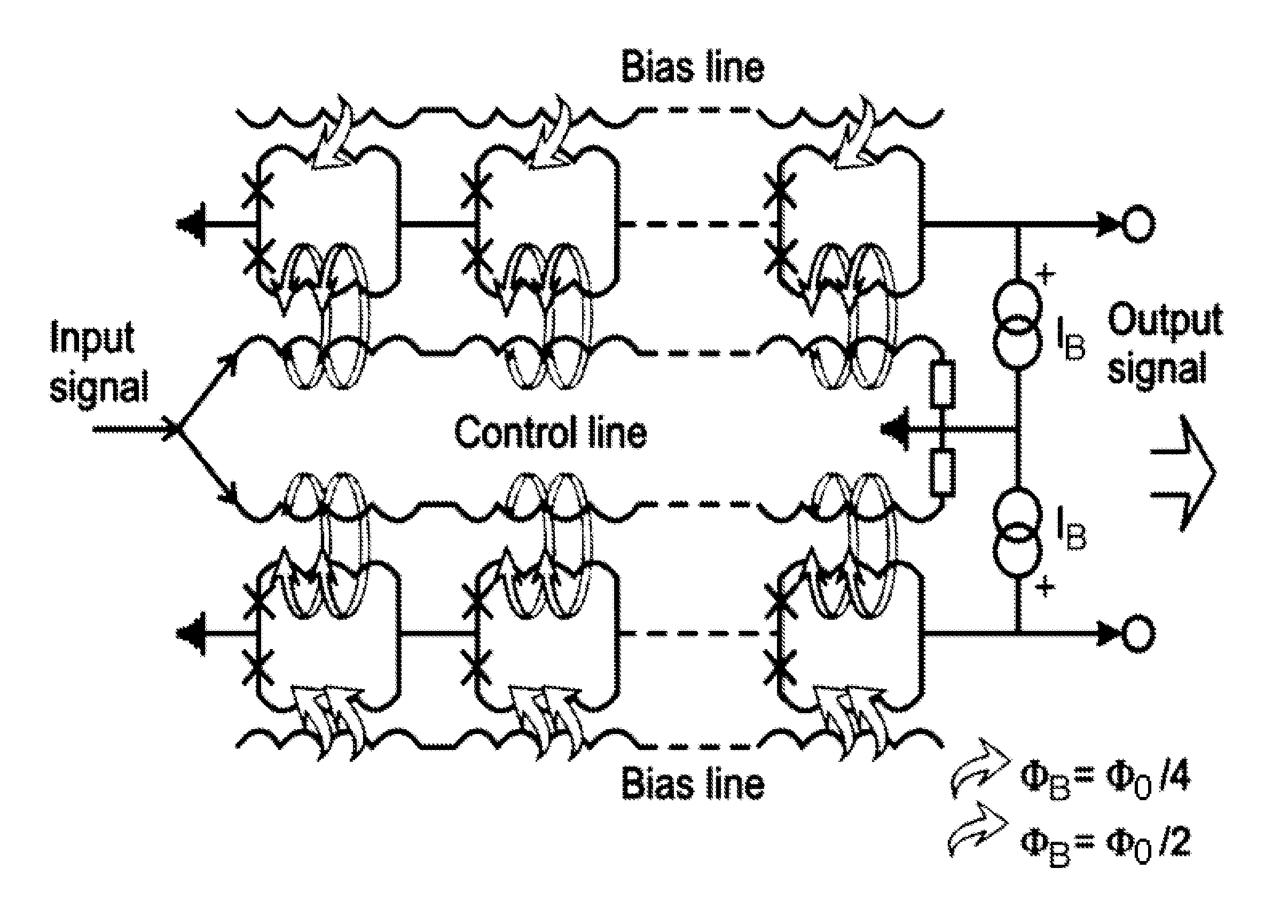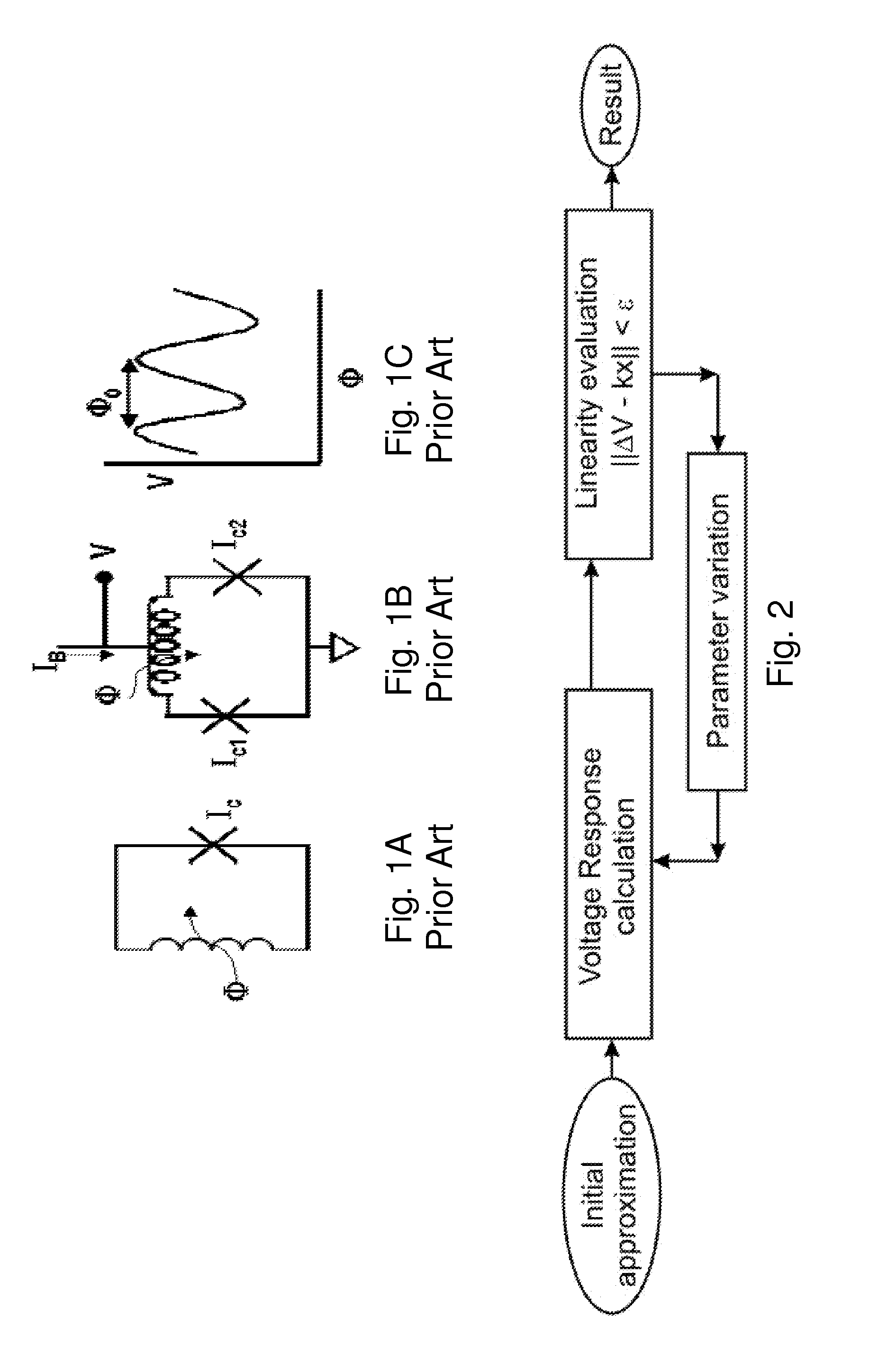High linearity superconducting radio frequency magnetic field detector
a radio frequency magnetic field and detector technology, applied in pulse generators, instruments, pulse techniques, etc., can solve the problems of narrow linearity range of transfer functions, inability to offer a clear way to achieve linearization of fundamentally nonlinear devices, and still far from desired performance values of amplifiers. achieve the effect of significantly reducing or eliminating total nonlinearities
- Summary
- Abstract
- Description
- Claims
- Application Information
AI Technical Summary
Benefits of technology
Problems solved by technology
Method used
Image
Examples
Embodiment Construction
I. Bi-SQUID
[0063]As described above, a major part of the invention comprises a new SQUID cell, the bi-SQUID. The DC SQUID, modified by adding a Josephson junction shunting the loop inductance, provides extremely high linearity with the proper selection of parameters. This is somewhat surprising, since a Josephson junction presents a nonlinear inductance. However, the junction nonlinearity is able to compensate the nonlinearity of the device in order to achieve an improved linearity close to 120 dB for significant loop inductances (which are necessary to achieve large coupling to external signals). It is to be understood by those skilled in the art that any other nonlinear reactance that functions in a similar way would have a similar effect on reducing the nonlinearity of the system transfer function.
[0064]The linearity dependence of the shunt junction Ic3 on critical current at different inductances of the SQUID loop is shown in FIG. 5. The linearity is calculated using a single-to...
PUM
 Login to View More
Login to View More Abstract
Description
Claims
Application Information
 Login to View More
Login to View More - R&D
- Intellectual Property
- Life Sciences
- Materials
- Tech Scout
- Unparalleled Data Quality
- Higher Quality Content
- 60% Fewer Hallucinations
Browse by: Latest US Patents, China's latest patents, Technical Efficacy Thesaurus, Application Domain, Technology Topic, Popular Technical Reports.
© 2025 PatSnap. All rights reserved.Legal|Privacy policy|Modern Slavery Act Transparency Statement|Sitemap|About US| Contact US: help@patsnap.com



